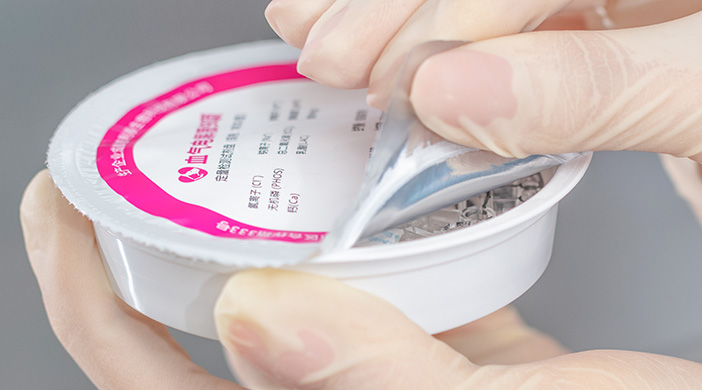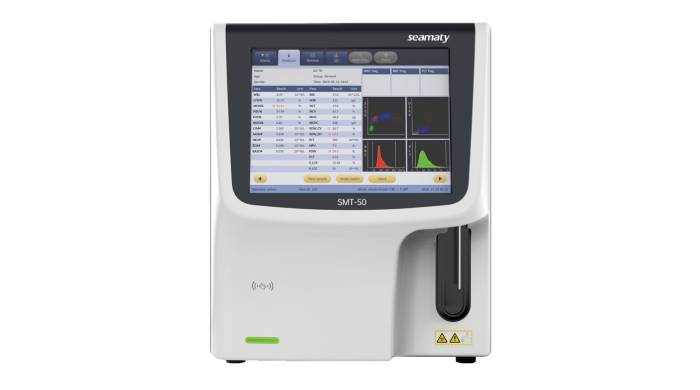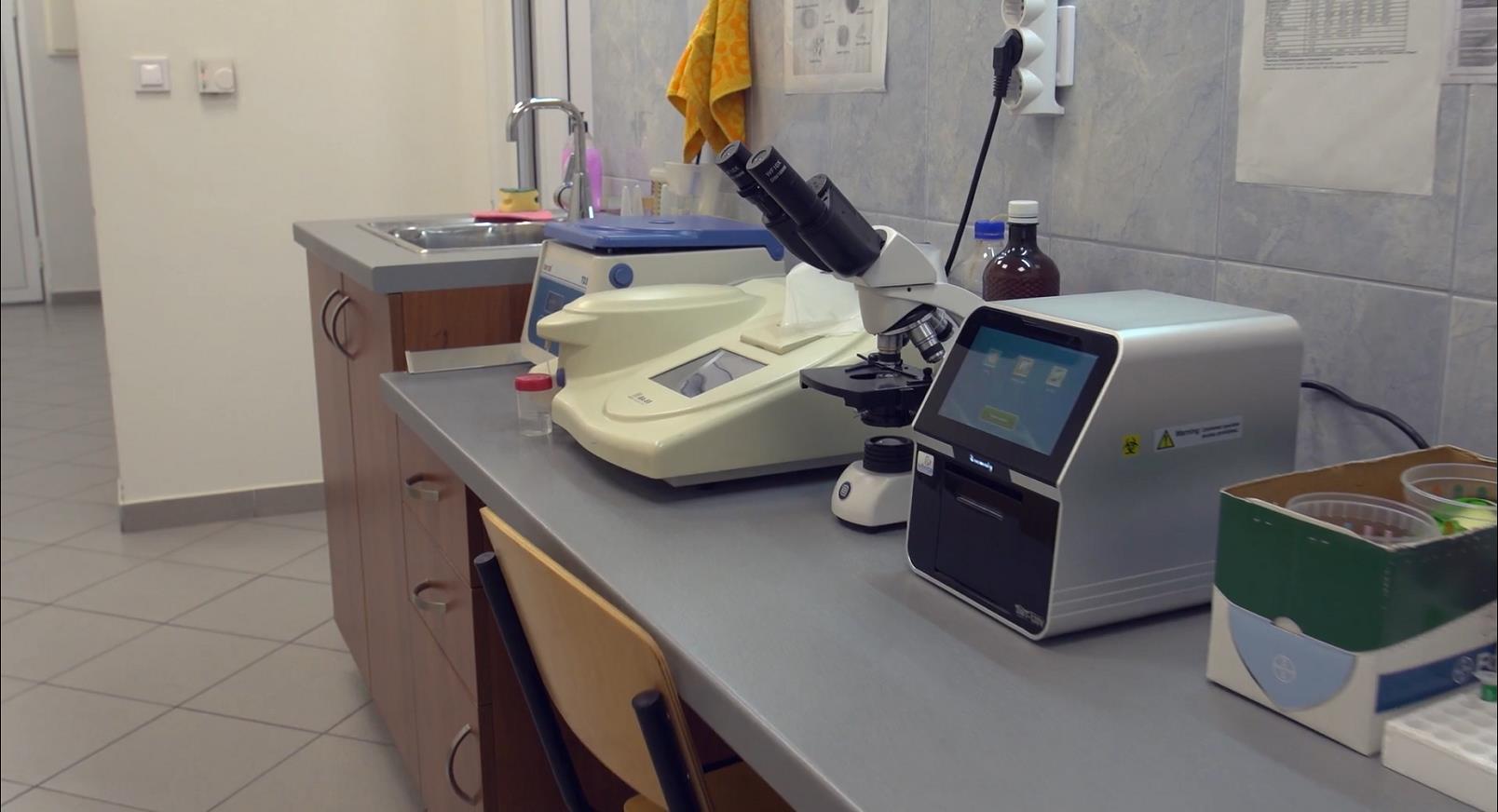'8 Feline Inflammation' is a reagent disk developed and produced by Seamaty for disease diagnosis in cats. The disc is used in conjunction with the Seamaty
Vet Chemistry Analyzer SMT-120VP.
f-SAA (feline serum amyloid A) is an acute-phase protein. This protein is secreted during the acute phase of inflammation and is increased at the onset and recurrence. SAA concentrations rise especially in the early stages of inflammation and tissue damage. For example, this protein is significantly increased in cats suffering from keratoconjunctivitis, periodontitis, stomatitis, trauma, acute laryngitis, acute pancreatitis, peritonitis, pustulosis, ulceration/dermatitis, and cystitis.
Also f-SAA is a valid marker for assessing whether a cat has pancreatitis. Therefore, SAA is an important inflammatory indicator and prognostic marker in cats.

The following are the clinical significance of the 8 tests
01. TBA (total bile acid)
TBA is formed by combining cholesterol with an amino acid. In normally fasted animals, whose blood is otherwise free of bile acids, the concentration can normally rise 4-fold 2 hours after a meal.
Increase↑
1. hepatocellular injury: common in acute or chronic hepatitis, cirrhosis, toxic liver disease, liver tumors, etc.
2. bile duct obstruction (intrahepatic or extrahepatic) with biliary stasis.
3. congenital or acquired portal shunt.
Decrease ↓
No special clinical significance.
02. BUN (urea nitrogen)
BUN is the end product of protein metabolism.
Increase ↑
1. prerenal increase: prerenal azotemia, muscle injury, drugs (steroids, tetracycline), etc.
2. renal increase: common in renal parenchymal tissue disease, glomerular injury, renal azotemia, reduced adrenal cortical function, etc.
3. postrenal increase: urethral blockage, ureteral or renal pelvis blockage, etc.
Decrease ↓
1. synthetic decrease: common in liver disease, poor liver function, portal shunt, low-protein food or absorption disorders, etc.
2. Diabetes mellitus or uremia, polyuria, rehydration therapy.
03. Crea (creatinine)
Crea is the end product of phosphocreatine metabolism. It is important for the contractile function of muscles.
Increase↑
1. prerenal increase: acute myositis, reduced renal blood perfusion, reduced adrenocortical function, cardiovascular disease and hyperpituitarism, etc.
2. severe renal injury: common nephritis, primary acute renal failure, chronic renal disease, etc.
3. urethral blockage, bladder rupture, drugs (cephalosporin antibiotics).
Decrease ↓.
Rarely seen in cachexia, muscle atrophy , mid to late pregnancy, etc.
04. ALB (albumin)
ALB is the main protein of the body. It carries many different substances involved in blood circulation and its main role is to maintain the colloid osmotic pressure in the plasma.
Increase ↑
1. hypoalbuminemia: common in hemoconcentration due to factors such as dehydration (severe diarrhea, vomiting and polyuria).
2. sample abnormalities, etc.
Decrease ↓
1. Generative factors.
a. Deficiency of amino acid sources or absorptive factors.
b. Common in liver injury (chronic liver disease, cirrhosis, hepatocellular carcinoma).
c. Hyperglobulinemia.
2. protein loss and catabolic factors: renal disease, acute or chronic bleeding, peritonitis, chronic infection, hyperthyroidism and malignancy.
3. Hemodilution after massive infusion.
05. ALP (alkaline phosphatase)
ALP is widely distributed in all organs and organs, with the liver being the most abundant.
Increase ↑
1. hepatobiliary system diseases: common in hepatic cholestasis, tumors, acute hepatocellular injury, hyperadrenocorticism, diabetes, hyperthyroidism, acute pancreatitis, etc.
2. drug factors: steroids, anti-epileptic drugs.
3. juvenile bone growth period, species, individual factors.
Decreased ↓
Seen in zinc deficiency, hypothyroidism, misuse of EDTA anticoagulation tubes, individual factors.
06. GGT (glutamyl transpeptidase)
GGT plays an important role in nitrogen metabolism and is present in hepatocytes.
Increase↑
1. pathological increase: common in bile retention, hepatitis, hepatotoxicity, pancreatitis, cholesterol deposition, nephropathy, increased corticosteroids and other factors, rare in sample hemolysis.
2. steroid and antiepileptic drug factors leading to poor biliary excretion or increased hepatocyte permeability.
3. physiological increase.
Decrease ↓
No specific clinical significance.
07. LPS (lipase)
LPS is an exocrine enzyme of the pancreas. LPS in the blood mainly comes from the pancreas and a small amount from the gastric mucosa. Serum LPS is an important auxiliary diagnostic indicator of acute pancreatitis.
Increase↑
1. prenephrosis, renal and postnephrosis ammoniaemia, renal failure
2. pancreatic diseases, commonly acute pancreatitis or necrosis, pancreatic abscesses, pancreatic duct obstruction, pancreatic tumors, etc.
3. inflammation of the small intestine and intestinal blockage.
4. increased adrenocorticotropic hormone, hyperparathyroidism, liver disease, etc.
Decrease ↓
Generally not clinically significant.
08. B/C* (urinary anhydride ratio)
B/C* is the ratio of urea nitrogen value to creatinine value. This calculated value is important for determining the degree of renal function lesions and reflects the protein catabolism in animals and the excretory function of the kidneys.
Increase↑
1. increased urea: primary or secondary elevation of urea.
2. decrease in creatinine: common in cachexia, muscular atrophy, mid to late pregnancy, etc.
Decrease ↓
1. Creatinine increase: primary or secondary creatinine increase.
Urea decrease: common liver disease, low protein feed, polyuria, etc.
The above is the pet biochemical examination of the 8 Feline Inflammation. Hope it is useful for you.


